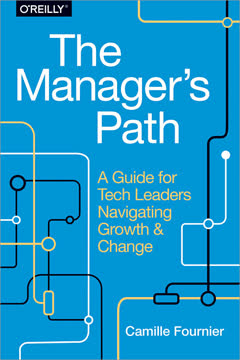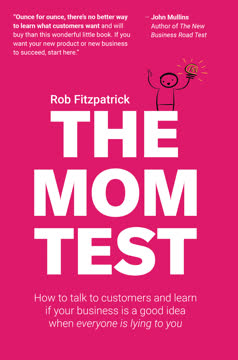نکات کلیدی
1. فناوری دیجیتال به رفتارها و نتایج خاصی تمایل دارد
فناوریهای دیجیتال به انتخاب تمایل دارند، زیرا همه چیز باید به صورت زبان نمادین و بله یا خیر بیان شود.
تمایلات ذاتی. فناوری دیجیتال بیطرف نیست؛ با تمایلات ذاتیای همراه است که تعاملات و تصمیمات ما را شکل میدهد. این تمایلات شامل تمایل به انتخاب، فوریت و انتزاع است. درک این تمایلات به ما امکان میدهد تا از ابزارهای دیجیتال به صورت آگاهانهتر و مؤثرتر استفاده کنیم.
تأثیرات بر جامعه. تمایلات فناوری دیجیتال پیامدهای گستردهای برای نحوه ارتباط، کار و تفکر ما دارد. به عنوان مثال، تمایل به انتخاب میتواند به خستگی تصمیمگیری منجر شود، در حالی که تمایل به فوریت میتواند توانایی ما را برای تفکر عمیق و تأملی کاهش دهد. با شناخت این تمایلات، میتوانیم استراتژیهایی برای مقابله با اثرات منفی آنها و بهرهبرداری از پتانسیل مثبت آنها توسعه دهیم.
2. درک و هدایت طبیعت "همیشه روشن" زندگی دیجیتال
به جای توانمند شدن و آگاهی، ما دچار استرس و خستگی میشویم.
اتصال دائمی. عصر دیجیتال دورهای از اتصال دائمی را به ارمغان آورده است که در آن انتظار میرود همیشه در دسترس و پاسخگو باشیم. این ذهنیت "همیشه روشن" میتواند به استرس، فرسودگی و کاهش توانایی تمرکز بر وظایف مهم منجر شود.
بازپسگیری کنترل. برای مقابله با اثرات منفی اتصال دائمی، باید:
- مرزهایی برای استفاده از دستگاهها تعیین کنیم
- زمانهای "آفلاین" مشخصی ایجاد کنیم
- با فناوری به صورت آگاهانه درگیر شویم
- تعاملات رو در رو را اولویتبندی کنیم
- استراتژیهایی برای کار عمیق و تمرکز توسعه دهیم
با کنترل عادات دیجیتال خود، میتوانیم از مزایای اتصال بهرهمند شویم و از مشکلات آن اجتناب کنیم.
3. تعادل بین ارتباطات مجازی و تعاملات دنیای واقعی
قلمرو دیجیتال به سمت دوری از محلی و به سمت جابجایی تمایل دارد.
حضور مجازی در مقابل حضور فیزیکی. فناوری دیجیتال توانایی ما را برای ارتباط با افراد در فواصل دور گسترش داده است، اما همچنین به کاهش ارزش تعاملات محلی و رو در رو منجر شده است. این تغییر میتواند به احساس قطع ارتباط از محیط و جوامع اطراف منجر شود.
ایجاد تعادل. برای حفظ روابط سالم و حس قوی از مکان:
- تعاملات حضوری را در صورت امکان اولویتبندی کنیم
- از ابزارهای دیجیتال برای تقویت، نه جایگزینی، ارتباطات محلی استفاده کنیم
- در فعالیتها و رویدادهای جامعه شرکت کنیم
- حضور و آگاهی در فضاهای فیزیکی را تمرین کنیم
- ارزش منحصر به فرد تجربیات جسمانی را بشناسیم
با تعادل آگاهانه بین تعاملات مجازی و فیزیکی، میتوانیم از مزایای اتصال دیجیتال بهرهمند شویم و غنای تجربیات محلی و جسمانی را حفظ کنیم.
4. شناخت سادهسازی بیش از حد مسائل پیچیده در فضاهای دیجیتال
قلمرو دیجیتال به سمت کاهش پیچیدگی تمایل دارد.
تمایلات تقلیلگرایانه. پلتفرمهای دیجیتال اغلب تشویق به سادهسازی موضوعات پیچیده به انتخابهای دوتایی یا جملات کوتاه میکنند. این میتواند به قطبیسازی، سوءتفاهم و از دست دادن زمینه در بحثهای مهم منجر شود.
پذیرش پیچیدگی. برای مقابله با این تمایل:
- دیدگاههای متنوع و محتوای بلندمدت را جستجو کنیم
- تفکر انتقادی و بررسی حقایق را تمرین کنیم
- در بحثهای متفکرانه و پیچیده به صورت آنلاین و آفلاین شرکت کنیم
- محدودیتهای نمایش دیجیتال مسائل پیچیده را بشناسیم
- رویکردهای بینرشتهای به حل مسائل را تشویق و در آنها شرکت کنیم
با پذیرش فعال پیچیدگی، میتوانیم گفتوگوهای معنادارتری را تقویت کنیم و راهحلهای جامعتری برای چالشهای اجتماعی توسعه دهیم.
5. حفظ هویت و مسئولیتپذیری در محیطهای آنلاین
خودتان باشید.
ناشناس بودن دیجیتال. اینترنت اغلب امکان تعاملات ناشناس یا با نام مستعار را فراهم میکند، که میتواند به قطع ارتباط بین خود آنلاین و آفلاین ما منجر شود. این میتواند به کاهش مسئولیتپذیری و تمایل به رفتارهای افراطی یا مضر منجر شود.
حضور آنلاین اصیل. برای پرورش یک حضور دیجیتال مسئولانه و اصیل:
- در صورت لزوم از نام واقعی خود استفاده کنیم
- مسئولیت اعمال و کلمات آنلاین خود را بپذیریم
- یک شخصیت آنلاین سازگار با خود آفلاین خود توسعه دهیم
- دائمی بودن ارتباطات دیجیتال را بشناسیم
- همدلی و درک را در تعاملات آنلاین تقویت کنیم
با حفظ هویت و مسئولیتپذیری آنلاین، میتوانیم محیط دیجیتالی صادقانهتر، محترمانهتر و سازندهتری ایجاد کنیم.
6. پذیرش قدرت باز بودن در عین احترام به مالکیت فکری
به اشتراک بگذارید، سرقت نکنید.
همکاری باز. عصر دیجیتال سطوح بیسابقهای از اشتراکگذاری و همکاری را ممکن ساخته است، که به نوآوریهایی در نرمافزارهای منبع باز، مجوزهای کریتیو کامنز و پلتفرمهای دانش تعاملی مانند ویکیپدیا منجر شده است.
تعادل بین باز بودن و مالکیت. برای هدایت این چشمانداز جدید:
- انواع مختلف حقوق مالکیت فکری را درک و به آنها احترام بگذاریم
- از منابع منبع باز و کریتیو کامنز به درستی استفاده کنیم
- در پروژههای تعاملی در صورت امکان مشارکت کنیم
- به درستی کار دیگران را نسبت دهیم و اعتبار دهیم
- از خالقان از طریق مصرف اخلاقی و جبران منصفانه حمایت کنیم
با پذیرش باز بودن در عین احترام به مالکیت فکری، میتوانیم فرهنگی از نوآوری و خلاقیت را تقویت کنیم که به نفع همه باشد.
7. یادگیری برنامهنویسی یا خطر برنامهریزی شدن
اگر برنامهنویسی را یاد نگیریم، خطر برنامهریزی شدن خودمان را داریم.
سواد دیجیتال. در دنیای فزاینده دیجیتال، درک چگونگی کارکرد فناوری برای حفظ عاملیت و اتخاذ تصمیمات آگاهانه ضروری است. مهارتهای برنامهنویسی به اندازه خواندن و نوشتن اساسی میشوند.
توانمندسازی از طریق کد. برای موفقیت در عصر دیجیتال:
- مفاهیم و زبانهای برنامهنویسی پایه را یاد بگیریم
- منطق پشت الگوریتمها و ساختارهای داده را درک کنیم
- پیامدهای اخلاقی فناوری را بررسی کنیم
- برای آموزش علوم کامپیوتر در مدارس حمایت کنیم
- تفکر انتقادی درباره نقش فناوری در جامعه را تشویق کنیم
با توسعه مهارتهای برنامهنویسی و سواد دیجیتال، میتوانیم به طور فعال چشمانداز فناوری را شکل دهیم و نه اینکه مصرفکنندگان منفعل آن باشیم.
آخرین بهروزرسانی::
FAQ
What's "Program or Be Programmed: Ten Commands for a Digital Age" about?
- Digital Age Challenges: The book explores the challenges and opportunities presented by the digital age, emphasizing the importance of understanding and engaging with digital technologies.
- Ten Commands: It provides ten "commands" or guidelines to help individuals navigate the digital landscape effectively and responsibly.
- Programming vs. Being Programmed: The central theme is the choice between programming digital tools or being passively programmed by them, highlighting the need for active participation in digital culture.
- Cultural and Social Impact: Rushkoff discusses the broader cultural and social implications of digital technologies, urging readers to consider their roles in shaping the future.
Why should I read "Program or Be Programmed"?
- Understanding Digital Biases: The book helps readers understand the inherent biases of digital technologies and how they influence human behavior and society.
- Empowerment through Knowledge: By learning about programming and digital literacy, readers can gain more control over their interactions with technology.
- Cultural Insight: Rushkoff provides insights into how digital technologies are reshaping culture, communication, and personal identity.
- Practical Guidance: The ten commands offer practical advice for living and working in a digital world, making it a valuable resource for anyone navigating modern technology.
What are the key takeaways of "Program or Be Programmed"?
- Be Conscious of Time: Digital technologies can disrupt our sense of time; it's important to manage how and when we engage with them.
- Value Real-World Interactions: Despite the convenience of digital communication, in-person interactions remain crucial for genuine connection.
- Embrace Complexity: Digital tools often oversimplify complex issues; it's vital to recognize and address this reduction.
- Learn to Program: Understanding programming is essential to avoid being passively controlled by technology and to actively shape digital experiences.
How does Douglas Rushkoff define "programming" in the book?
- Beyond Coding: Programming is not just about writing code; it's about understanding how digital systems work and influence us.
- Empowerment Tool: It is a means of gaining control over technology, allowing individuals to shape their digital environments.
- Cultural Literacy: Programming is seen as a form of literacy necessary for participating fully in the digital age.
- Active Participation: Rushkoff emphasizes programming as a way to actively engage with and influence the digital world, rather than being a passive consumer.
What are the "Ten Commands" in "Program or Be Programmed"?
- Time: Do not be always on; manage your digital engagement.
- Place: Live in person; prioritize real-world interactions.
- Choice: You may always choose none of the above; resist forced digital choices.
- Complexity: You are never completely right; embrace complexity and nuance.
- Scale: One size does not fit all; recognize the limits of digital scalability.
- Identity: Be yourself; maintain authenticity online.
- Social: Do not sell your friends; value genuine connections over commercial interests.
- Fact: Tell the truth; prioritize factual communication.
- Openness: Share, don’t steal; respect intellectual property and collaboration.
- Purpose: Program or be programmed; learn to code and understand digital systems.
What does Rushkoff mean by "Program or Be Programmed"?
- Choice of Agency: The phrase emphasizes the choice between actively shaping digital tools or being passively shaped by them.
- Control Over Technology: It highlights the importance of understanding and controlling the technologies we use.
- Cultural Influence: The concept underscores the role of programming in influencing culture and society.
- Empowerment Message: Rushkoff encourages readers to learn programming to gain empowerment and agency in the digital age.
How does "Program or Be Programmed" address the concept of digital identity?
- Anonymity vs. Authenticity: Rushkoff discusses the tension between anonymity and authenticity in digital interactions.
- Accountability: He emphasizes the importance of being accountable for one's words and actions online.
- Identity as Liability: The book explores how digital identity can be a liability, especially when anonymity leads to depersonalized behavior.
- Encouragement to Be Real: Rushkoff encourages readers to maintain their real identities online to foster genuine connections and accountability.
What are the implications of digital technology's bias toward choice, according to Rushkoff?
- Forced Decisions: Digital systems often force users to make choices, even when unnecessary, due to their binary nature.
- Illusion of Freedom: The abundance of choices can create an illusion of freedom while actually limiting true autonomy.
- Consumer Manipulation: Marketers exploit this bias to influence consumer behavior and preferences.
- Resisting Categorization: Rushkoff advises readers to resist unnecessary categorization and embrace the option of choosing none of the above.
How does Rushkoff suggest we handle the complexity of digital information?
- Recognize Oversimplification: Digital tools often oversimplify complex issues, leading to polarized views and misunderstandings.
- Value Context: It's important to seek context and understand the broader picture rather than relying solely on digital summaries.
- Embrace Nuance: Rushkoff encourages embracing complexity and nuance in digital interactions and decision-making.
- Avoid Binary Thinking: He warns against the reductionist nature of digital systems that promote binary thinking and choices.
What does Rushkoff say about the social nature of digital media?
- Inherent Social Bias: Digital media is inherently social, designed to connect people rather than isolate them.
- Monetization Risks: Attempts to monetize social interactions can compromise the integrity of digital networks.
- Value Genuine Connections: Rushkoff emphasizes the importance of valuing genuine human connections over commercial interests.
- Evolutionary Imperative: He suggests that the drive for social connection is an evolutionary imperative, pushing us toward greater collaboration.
What are some of the best quotes from "Program or Be Programmed" and what do they mean?
- "Program, or be programmed." This encapsulates the book's central message about the importance of understanding and engaging with digital technologies.
- "The content is not the message, the contact is." Rushkoff highlights the value of human connection over the content itself in digital interactions.
- "Tell the truth." This command underscores the digital age's bias toward factual communication and the importance of honesty.
- "Be yourself." Rushkoff encourages authenticity and accountability in digital spaces, warning against the depersonalization of online interactions.
How does "Program or Be Programmed" address the issue of digital openness and sharing?
- Bias Toward Sharing: Digital networks are inherently biased toward openness and sharing, reflecting their collaborative origins.
- Distinguishing Sharing from Stealing: Rushkoff emphasizes the importance of understanding the difference between sharing and exploiting others' work.
- Cultural Shift: The book discusses the cultural shift toward openness and the challenges it presents in terms of intellectual property.
- Promoting Ethical Sharing: Rushkoff advocates for ethical sharing practices that respect creators' rights while embracing digital collaboration.
نقد و بررسی
کتاب برنامهنویسی کنید یا برنامهریزی شوید نظرات متفاوتی را به خود جلب کرده است. برخی از خوانندگان به تحلیل عمیق آن از تأثیر فناوری دیجیتال بر جامعه و مشاورههای عملی برای مواجهه با عصر دیجیتال اشاره میکنند. در مقابل، عدهای آن را تکراری، واضح یا فاقد عمق میدانند. بسیاری از افراد به بررسی تعصبات فناوری توسط راشکوف و درخواست او برای سواد دیجیتال، از جمله مهارتهای برنامهنویسی، ارج مینهند. منتقدان بر این باورند که برخی از تشبیهات نادرست و راهحلها ناکافی هستند. بهطور کلی، خوانندگان ایدههای تحریکآمیز این کتاب درباره رابطهمان با فناوری را ارزشمند میدانند، حتی اگر با تمام استدلالهای راشکوف موافق نباشند.
Similar Books
















